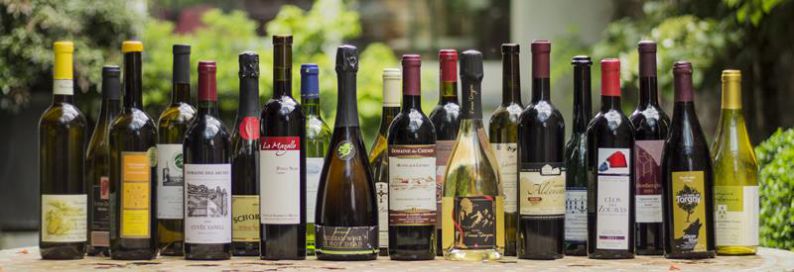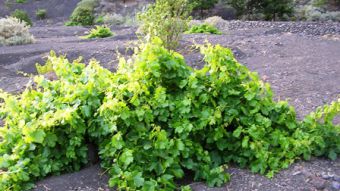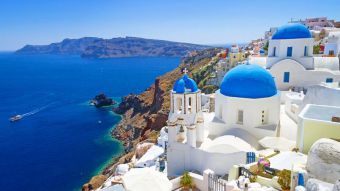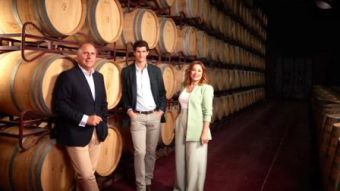Belgium and something good about climate change

We all know Belgium for its amazing variety of quality beers, ranging from the classic beers claiming a fine heritage to the big, well known brands, as well as many innovative beers, the result of the unique capacity of the Belgians to continuously invent new beers.
Less well known is the fact that, in Belgium and England, the monks had to turn to brewing when the climate became too cold for them to cultivate vines, and that all big Belgian towns could boast of vineyards up until the 15th century. But when the cold arrived and the monks in Priorat and Burgundy took to making fine wine, the Belgian Trappist monks started producing heavenly beer.
The other thing that strikes you when you visit Belgium, apart from the beer, is the fantastic wine market. On the one hand, the Belgian consumer recognizes and pays for quality and, for this reason, Belgium has been a traditional market for the great French fine wine regions of St. Emilion, Pomerol, Burgundy, etc.
On the other hand, the Belgians are experimental and adventurous wine drinkers with no emotional ties to any particular wine region. As a result, all types of wine can be found in Belgium, from international brands to wine of the most unlikely origins, from the well-known classics to revolutionary natural wines.
Per capita wine consumption in Belgium is much higher than it is in Spain. I often think that the fact that wine buying is more fun in Belgium than it is in Spain might have something to do with this.
Perhaps because of their country's brewing origins, Belgians particularly love their bubbles. According to statistics, each adult Belgian, of whatever age and drinking habits, consumes four litres of sparkling wine per year.
These statistics do not, however, take into account the Belgian national sport, which this writer occasionally practices himself, of whizzing down to neighbouring Champagne to bring back a few 'duty free' cases in the trunk of the car. It's not that the savings are huge - Belgian tax on sparkling wines is about 2 euros per bottle - but it's fun.
Belgium is the third largest export market for Cava, after Germany and the U.S. But it is the biggest market in the world, including Spain, in terms of per capita consumption of Cava, and the concentration of consumption is even bigger in the Flanders region. In fact, the Flemish population of six million consumes more Cava than sixty million Britons! Although the most likely reason for Cava's popularity in Belgium is its value for money, I have noticed that there is growing interest in higher quality Cavas.
Belgium's Wine Production
You would think that Belgium was too far north to cultivate the vine, but appearances can be deceptive. In the Middle Ages, until the 'Little Ice Age' of the 15th century, some areas around Liège were reputed for their wine production associated, as was the case with the best French regions, with the hospital work carried out by the monastic orders. Then beer arrived, and by the 20th century there was practically nothing left.
The first Belgian designation of origin, Hageland, was only created in 1997, followed by Haspengouw in 2000 and by Côtes de Sambre-et-Meuse in 2004. Back in 2004, production remained very low at 1,400 hl and almost entirely from grape varieties selected for their resistance to cold rather than for their quality potential. Today we are seeing production of around 5,000 hl.
In the 21st century, the combination of Belgium's thirst for wine, scientific improvements in viticulture and climate change have sparked a mini revolution. Wine is a product that stirs national pride. If it happens to be halfway decent, the entire population will defend it with a passion. This is something that natives of wine producing countries can relate to.
National pride can lead to wine being produced almost anywhere despite the costs and difficulties being greater than in other countries. The fact that consumers are willing to pay more for their own wine is also a strong incentive to invest more in the vineyards, as is the case in Belgium.
Furthermore, the climate has changed; it is much more temperate with longer summers, and summers and autumns which are more frequently sunny.
I was recently able to participate in a trade tasting of almost all the Belgian wines available on the market, around 90, and to get a fairly accurate picture of this country’s strong points.
There is still a majority of wines made from varieties such as Solaris, Bianca, Johanniter, Bronner, Reichenstein, Schönburger, Rondo, Regent or grapes with other similarly uninspiring names, most of them of German origin and whose greatest merit is to produce grapes with sugar in fairly tough climates. Other more recently created varieties, such as Acolon, Pinotin or Cabertin, when carefully cultivated, produce some interesting quality wines for the enjoyment of Belgian wine drinkers and adventurous wine lovers.
The best Belgian wines
I was prompted to write this article because we are now seeing the emergence of the first Belgian wines of international quality, which I will comment on in order of increasing interest. I will begin with the reds, where there is clearly one designation of origin which stands out from the others in quality terms, the Côtes de Sambre-et-Meuse. This region has good vineyard soils and south exposed slopes which help ripening.
My favourite producer is Bon Baron who, although they also make sparkling and white wines, caught my eye with their very clean, fresh and fruity Pinot Noir red. Perhaps not as attractive, but very original, is their Acolon varietal red, which I realized that I had never tried before: medium bodied, with red berry fruit, soft, very pleasant.
La Mazelle is perhaps the most original of the producers, with a community and social stance which traditional wine producing countries find surprising. La Mazelle is a non-profit association, with labour provided free of charge by a large number of volunteers and its proceeds going to social causes. The red wine is interesting, a touch green on the nose, but cheerful and clean on the palate with a nice finish.
Although it might appear that the cold Belgian climate would be better suited to the production of white wines, it is clear that high quality wine needs warmer terroirs and that fairly green wines still make up the majority of the whites. There are however two important figures in Belgium, who already have an international dimension, and who both come from the same designation of origin, Haspengouw.
Clos d’Opleeuw is not the best known, probably because their production is small, but they are very interesting. Their Chardonnay is really elegant, very expressive and long, with a beautiful aromatic integration of the oak (French and Belgian!). It could give many burgundies a run for their money.
The second, Wijnkasteel Genoels-Elderen, is well known and respected. From vines planted in calcareous soils and produced with great technical competence, their wine has long been receiving many good reviews from both inside and outside Belgium. I prefer their Chardonnay Blauw, a very pure wine with beautiful balance, to their more well-known Chardonnay Goud, which I feel is too marked by barrel fermentation.
Belgian Spakling wines
Now for the wines which Belgian producers and drinkers love the most, the sparklers. If you have Belgian friends who are into wine, you should have them try the various Ruffus cuvées from Domaine des Agaises, a méthode traditionnelle sparkling wine, extremely popular in Belgium. My favourite is the Cuvée Seigneur Brut Sauvage, a pure Chardonnay blanc de blancs, very precise in its citrus fruit expression and a little malic, with elegant touches brought by the lees. Not very complex, but very enjoyable.
The Chardonnay from Meerdael, somewhat more austere, has a touch of minerality that makes it quite original. It displays its Northern origins honestly and is easy to drink. The Zilveren Parel from Genoels-Elderen is a nice sparkling wine, with a carefully crafted expression, clean fruit and touches of yeast that make it a classic wine, fruity on the palate with an open finish. This is a commercial wine, in the best sense of the word, because anyone can enjoy it.
I will conclude with the wine which I enjoyed the most, a wine which I think puts Belgium wine on the map. I am referring to Fibonacci from Schorpion, a wine of great complexity, no doubt acquired during its long aging on the lees, constructed from fruit of exceptional acidity but with enough maturity for it to show a solid structure on the palate. The wine is intriguing on the nose, excites on the palate and has you musing on the finish. A real treat, up there with the great sparklers, highly recommended.
I doubt that Belgian wines can be easily found outside Belgium, but I suggest you check out these recommendations when you visit the country. These are wine experiences worth trying and, as they say that wherever you go, you should try the local drink, you now have a good excuse to order a bottle of Belgian wine when in Belgium. After all, man does not live on beer alone.





